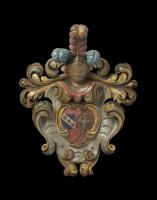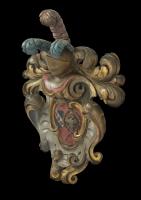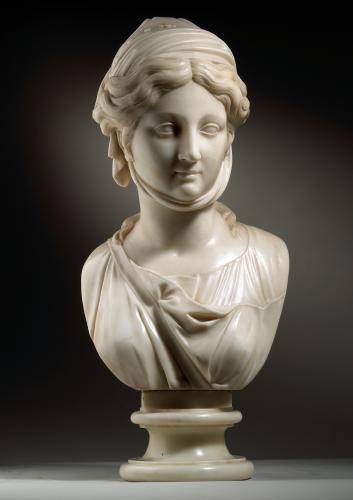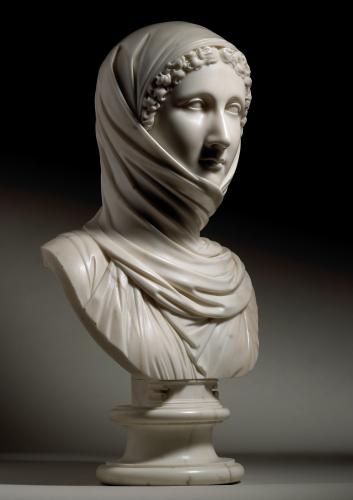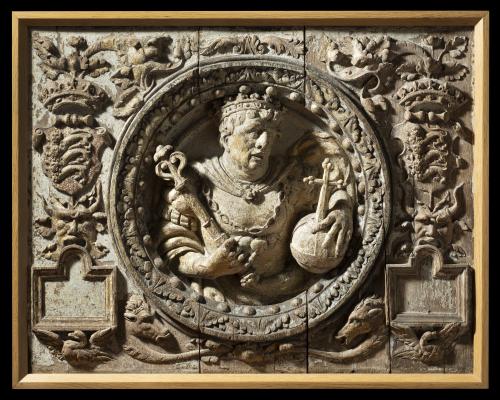
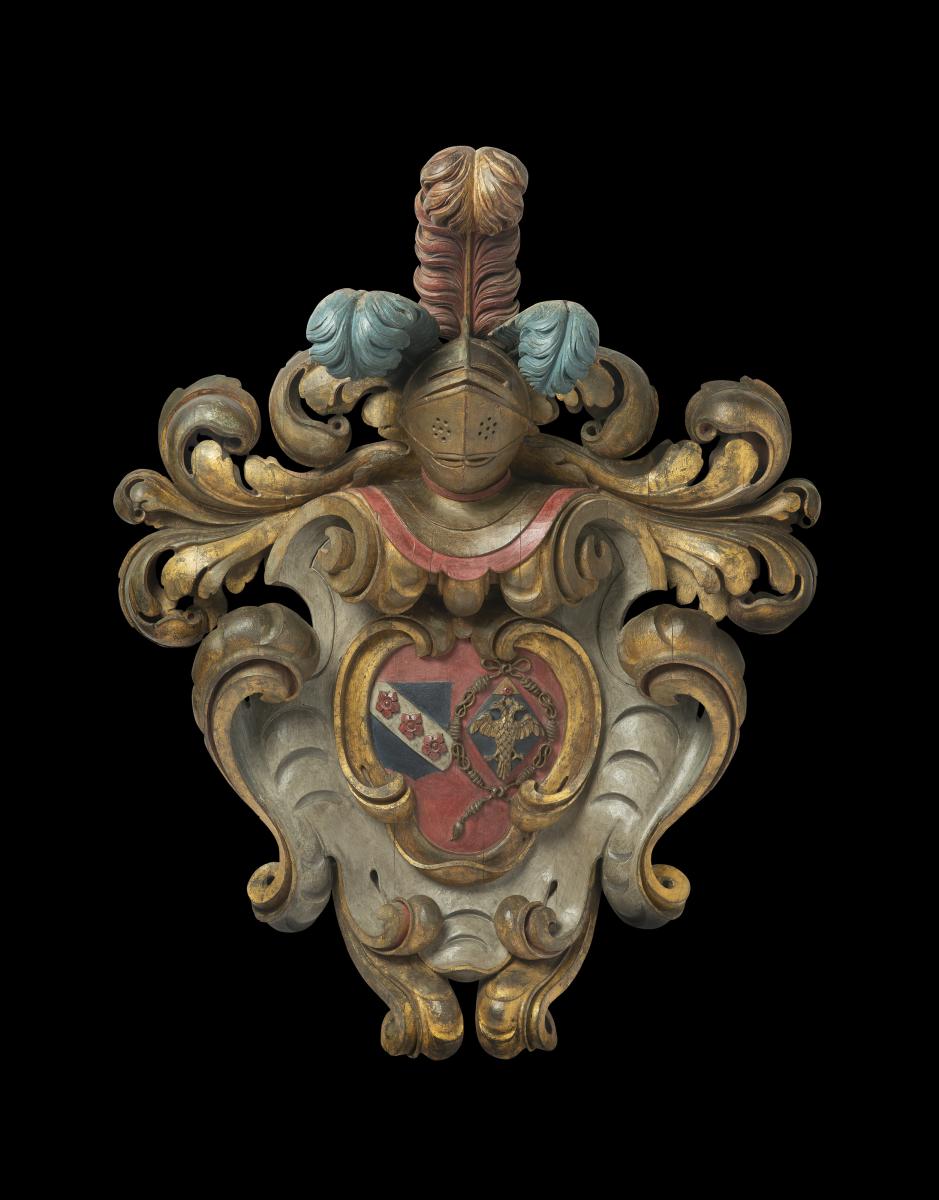
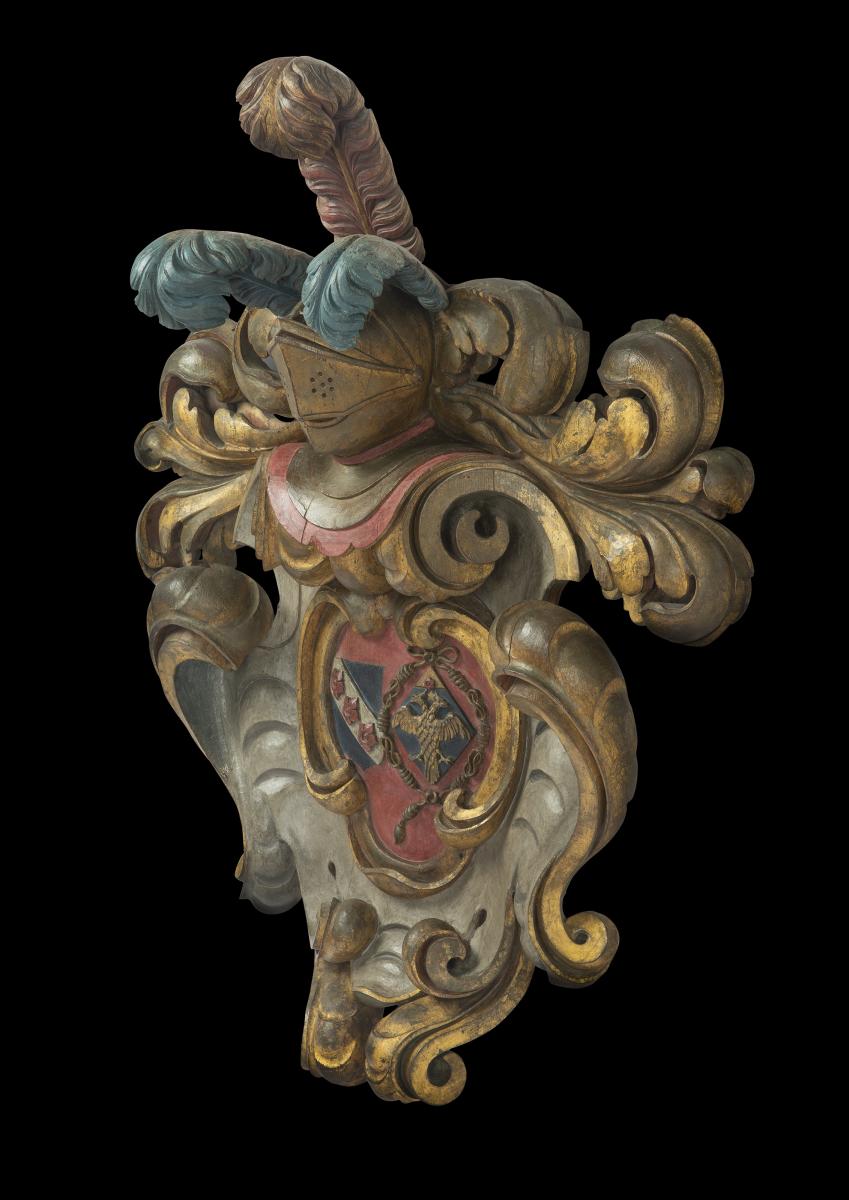
Price on application
This object includes complimentary, Insured Shipping / Delivery within the UK
This object is eligible for a Certificate of BADA Provenance
The BADA Standard
- Since 1918, BADA has been the leading association for the antiques and fine art trade
- Members are elected for their knowledge, integrity and quality of stock
- Our clients are protected by BADA’s code of conduct
- Our dealers’ membership is reviewed and renewed annually
- Bada.org is a non-profit site: clients deal directly with members and they pay no hidden fees
17th Century Carved oak and polychrome decorated Achievement of Arms.
PRUSSIA, CIRCA 1680.
Original decoration with minor restoration.
The carved, polychrome painted and gilt arms with a visor affronté, topped by three plumes azure, or and azure, above mantling and a scroll-edged cartouche.
The central shield-shaped red cartouche flanked by C scrolls bears two separate coats. The dexter shield is azure on a bend argent three roses gules. The sinister shield clearly being the arms of a lady which is indicated by being within a lozenge (diamond shape), as well as the cordeliere and comprising a gold eagle with two heads on a blue field, with a gold ‘chief’ (possibly a narrow chief or comble) which is charged with a rose (possibly an allusion to the dexter coat).
This achievement may be related to the House of Dyhrn. Rietstap records four coats for this noble Silesian family, though none appear to have this as a simple coat. The 1655 barony has the coat placed on a quartered field of black, red, gold and silver; the 1693 barony shows it on a silver field, but there the roses have become stars and it is surmounted by a coronet; the Counts and Barons of Schonau have the coat as an escutcheon of pretence on six quarters, which, as with this achievement, include a Prussian Imperial eagle with crown, sceptre and orb.
As a simple shield on its own, Rietstap also records this for ‘Dier (branche de la fam. de Dyhrrn)’.
Germanic coats of arms are usually grandiose, especially in the case of noble families who usually make advantageous alliances which further enhance their coats of arms. Whilst this achievement may be related to the Dyhrn family, a helm with closed visor and no crest would not denote high rank and the lack of additional embellishments indicate it is possibly that of a burgher, or untitled member of the nobility. A form of panache (in this case a plume of three ostrich feathers) is sometimes used in place of the crest, occasionally because the crest is not known or is not entitled.
House of Dyhrn: is one of the most important, oldest and richest noble families of the Kingdom of Prussia, first mentioned in the 13th century. Lords Dyhrn received the title of Reichsfreiherr Baron (a Baron of the Holy Roman Empire) in 1655 from the Habsburg monarchy.
The town of Brzeg Dolny in south-west Poland came officially to be known as Dyhernfurth in 1663, following its purchase in 1660 by the Austrian chancellor Baron George Abraham von Dyhrn (1620–1671). The town was granted town privileges by Emperor Leopold I of Habsburg (1640-1705). It remained with the family until the 19th century.
See Rietstap Armorial General p. 584: https://archive.org/details/armorialgnra01rietuoft/page/584/mode/2up?ref=ol&view=theater
Dimensions
120 x 100 cmPrice on application
This object includes complimentary, Insured Shipping / Delivery within the UK
This object is eligible for a Certificate of BADA Provenance
Stock number
6890The BADA Standard
- Since 1918, BADA has been the leading association for the antiques and fine art trade
- Members are elected for their knowledge, integrity and quality of stock
- Our clients are protected by BADA’s code of conduct
- Our dealers’ membership is reviewed and renewed annually
- Bada.org is a non-profit site: clients deal directly with members and they pay no hidden fees


